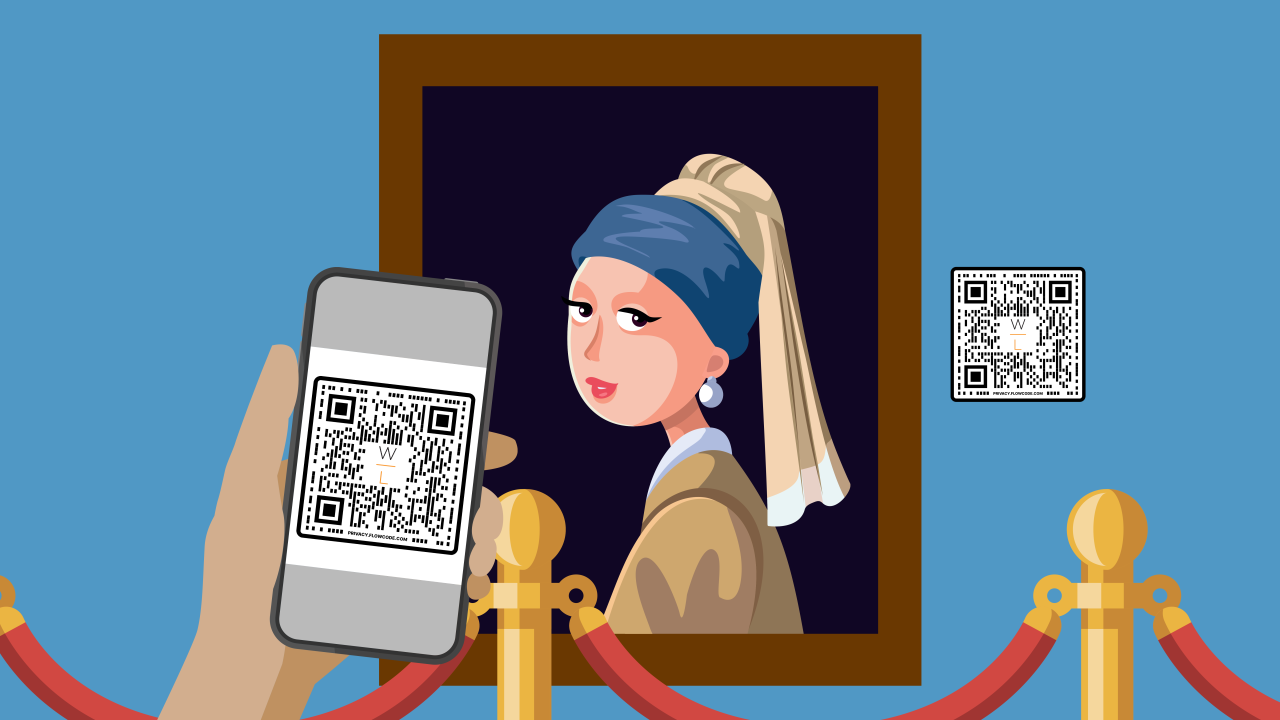
This post is an advertorial written by a company that serves the museum field. The views, opinions, and positions expressed by the authors and those providing comments are theirs alone and do not necessarily reflect the views, opinions, or positions of AAM or its employees.
QR codes can create links between your physical museum and the virtual world, all with a quick click from a patron’s mobile device. You can create QR codes for free using the many tools available on the internet, and they can link to absolutely anything, from webpages and videos to online games and immersive virtual reality experiences. Here are four inexpensive ways you can use QR codes to engage your patrons:
1. Scavenger Hunts
Finding new and easy ways to inspire patron interaction is easy with a QR-code-based scavenger hunt. Place QR codes near related artifacts, where each QR code leads to a webpage that tells something important or exciting about the artifact and then gives a clue to the next one.
Start the hunt by giving your patrons a clue on where to find the first QR code. Your clue can be anything, even a riddle. The point is that it should be something that gets patrons searching! You can be completely mysterious and just tell patrons the first QR code is in a specific room or be specific and tell them exactly what they are hunting.
Your scavenger hunt could reveal a historical figure’s story, clue by clue, or it could show connections between a group of artists—use your imagination! You could offer a prize for patrons who complete the entire scavenger hunt. Prizes can be something physical, like a pencil or a sticker, or they can be virtual badges patrons share on social media that both showcase their accomplishment and advertise your museum.
Make sure your frontline staff understand the scavenger hunt and know where to find all of the QR codes. You may need to create a map for them that explains the game and its purpose so that they can help patrons engaged in the scavenger hunt.
You can print QR codes in almost any color, so if you want to have scavenger hunts of varying difficulty or on varying topics, you can assign a different color to each scavenger hunt.
2. Enhanced Interpretations
Your walls have a finite amount of space, yet you have a wealth of information you want to share about every artifact in your museum. You can use QR codes to both save space and give all of the information you want your patrons to know.
For example, imagine you have a painting that has been meticulously restored through a years-long, extensive process. You may only have enough room on your wall to list the artist, the era, and a quick paragraph explaining what is pictured in the painting. However, if you include a QR code on your wall plate, it could link patrons to a video explaining the restoration process and showing how it was completed.
If you have a little extra budget, you could create a learning interactivity where patrons can scan a QR code, see the painting in its original state on their mobile devices, then interact with it to see each step in the restoration process and how it improved the painting’s condition. This immersive activity would create a memorable impression for patrons and help them understand the care and attention to detail required to preserve historical artifacts.
3. Engaging All Patrons (Even the Youngest Ones)
Think about the most complicated exhibit in your museum. Does it use miniature figures or models? Are they easy to see and understand? How about when your museum is crowded? Can people of all heights and visual abilities see the piece well and understand it?
Adding a QR code to a complicated exhibit could help you bring new meaning to the exhibit for all patrons. You could link to a webpage where patrons can see photos of the entire model and zoom in on them. You could break a larger piece into small chunks so patrons could learn about individual parts. You could link to videos that give explanations about the events going on in a complicated model.
Even if your museum does not have a super complicated exhibit or model, you probably have exhibits that are above some of your youngest visitors’ heads—literally. Adding QR codes for artifacts hung up high could help young visitors better see and interact with everything in the room.
Air and space museums have wonderful collections of historic flying vessels, but patrons are often left wondering what they look like inside the cockpits. The latest VR technology could allow patrons to scan a QR code and virtually tour the inside of every flying machine, all without leaving the museum floor. While these experiences may have been cost-prohibitive a decade ago, 360-degree cameras are much less expensive now. Paired with VR software, you can create immersive experiences quickly and easily.

4. Stand-ins for Missing Pieces
One of the greatest contributions museums make is to loan pieces from their permanent collections to other museums so a larger number of patrons can see and enjoy them. Unfortunately, loaning a piece also means blank spaces on walls and in cases. Some museums print photographs of the loaned pieces to take their place on the wall, but missing pieces are an excellent opportunity for a QR code-based experience.
In the space where the loaned piece belongs, you could provide a QR code that links to a webpage about the loaned piece. The webpage could show a picture of the piece, where patrons can zoom in on it, as well as its interpretation, and even a video explaining the piece and showing it on loan to the host museum. This way, the piece is not “missing;” it is just translated into a new form.
QR codes give endless opportunities for patrons to interact with artifacts and exhibits with their mobile devices. Download WeLearn’s free e-book Mobile Technology Magic to learn more about how you can use QR codes and otherwise leverage your patron’s mobile phones to create new and exciting learning experiences.
About WeLearn
WeLearn is a custom learning and media agency that is focused on bringing learning to life for their partners and the learners they serve. WeLearn specializes in the design and development of media-based experiences that engage learners in the flow of learning, allowing them to acquire knowledge, synthesize thought, and explore new ideas and perspectives.
Our team of creatives, educators, and technologists understand the power of technology to create learning experiences that are modern, beautiful, relevant, engaging, and impactful for both small and large audiences. Our partners trust us to bring their best ideas to life.
For more information about us or to schedule a conversation, email us at hello@welearnls.com.









Amazing ideas. I hope to incorporate two of them in the next couple of months! Keep ’em coming!!!